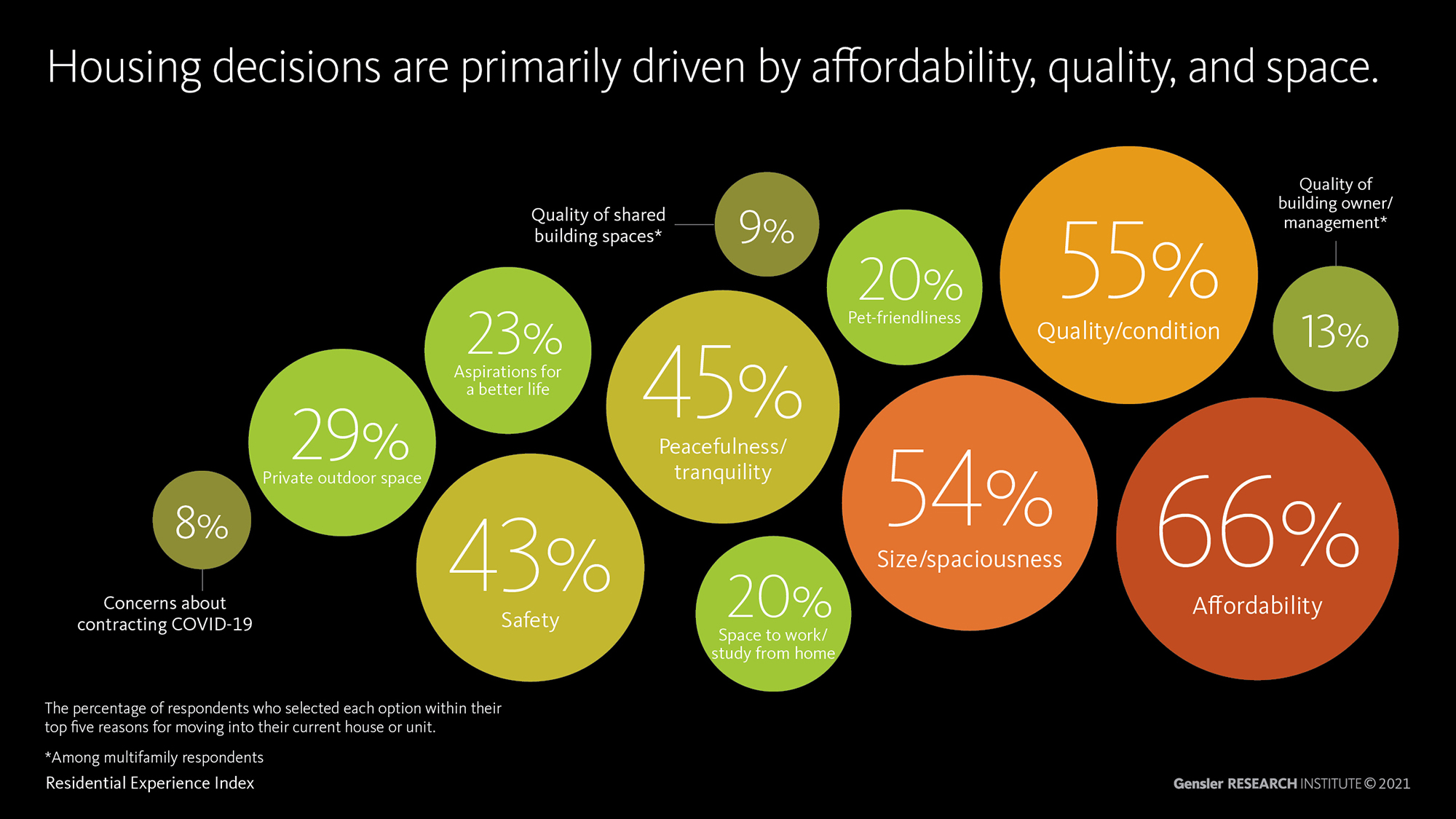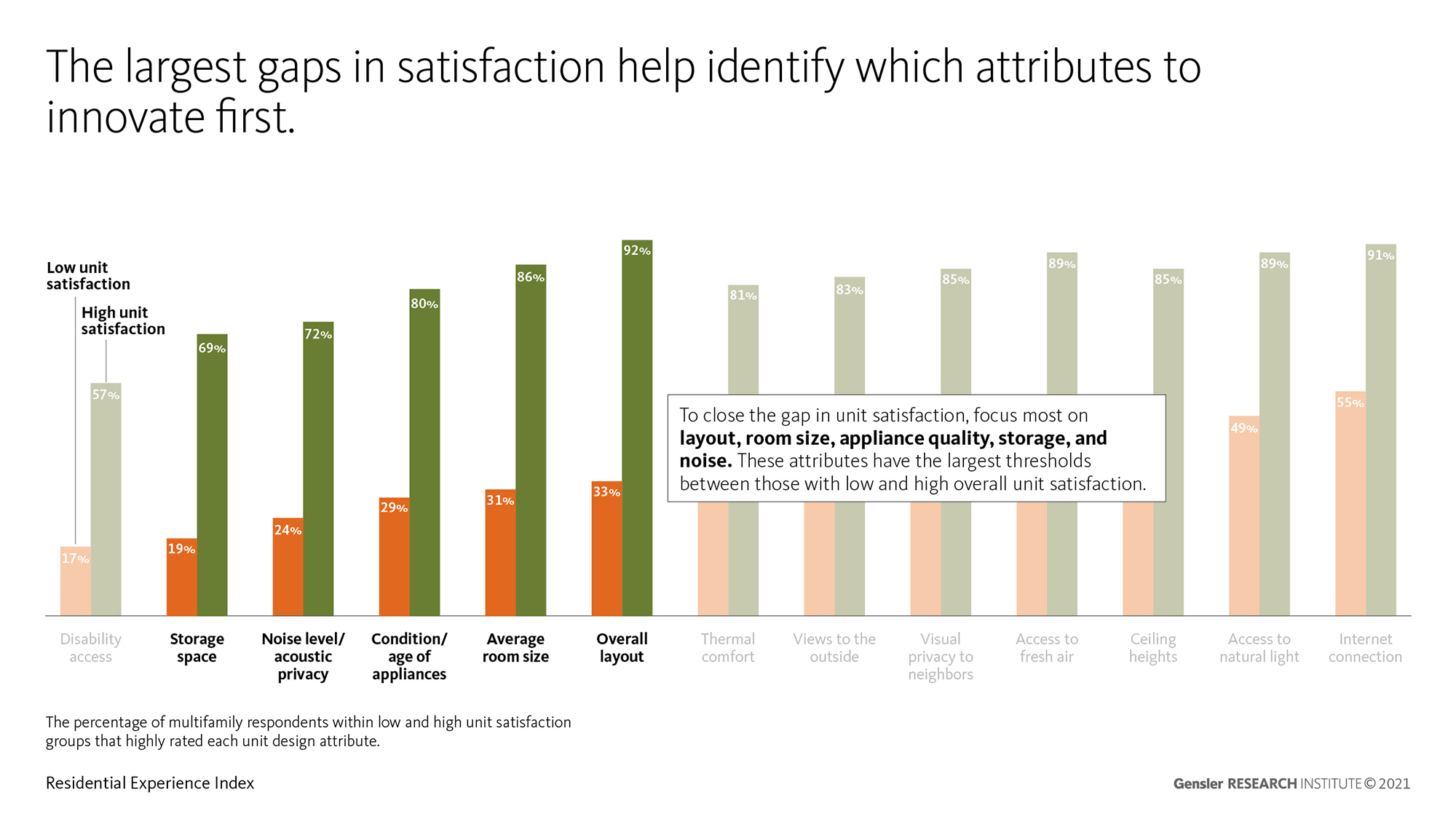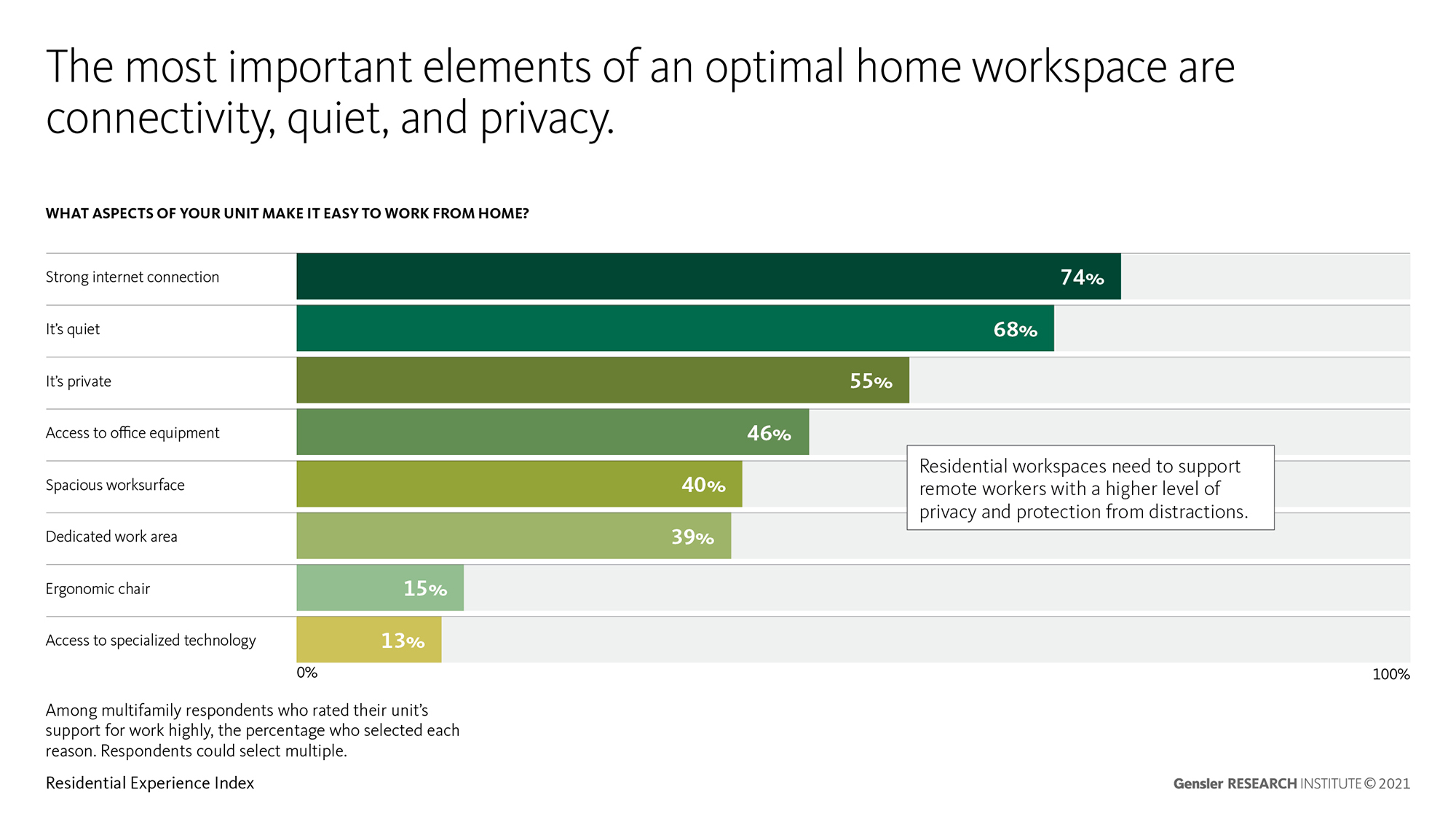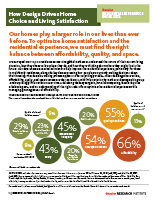We surveyed over 10,000 residents across nine global markets to understand the nature of their current living situation, how they chose to live where they do, and how they’re thinking about where they might live in the future. Gensler’s Residential Experience Index uncovers tactical solutions to help improve the residential experience, particularly for those in multifamily residences, alongside key data expressing how people are currently making decisions about their housing.

Housing decisions are primarily driven by affordability, quality, and space.
Our Residential Experience Index found that the decision-making process in choosing where to live is surprisingly stable: affordability, quality, and spaciousness are the top factors, with little variation by market or demographic group and surprisingly little variation over time. Addressing these synergistic, but also competing factors requires a balancing act — and an understanding of the right trade-offs to optimize the residential experience while managing growing issues of housing affordability.

The design of residential units is ripe for innovation. A focus on storage space, layout, and noise level will make the most meaningful impact.
Residents who are most satisfied with their units gave higher scores in Gensler’s Residential Experience survey to all design attributes, compared to those who reported being least satisfied. Identifying attributes with the largest gaps between the most and least satisfied residents — including unit layout, room sizes, appliance quality, storage space, and noise levels — helps to identify which elements to target first for improvement.

Support for well-being, privacy, and quiet not only drive overall unit satisfaction — they're also key elements of a functional home workspace.
Those who work from home not only depend on company-provided resources such as laptops and collaboration tools, but also rely on a strong internet connection. In addition, quiet and privacy in a residential unit are top aspects that can make it easy to work from home. From Gensler’s Workplace Survey research, we know that work/life balance is a driver of many key outcomes, such as health and well-being. When residential units are designed with optimal access to natural light, fresh air, and the outdoors, residents can enjoy healthier units that foster an optimal home workspace.
Residential Experience Index 2021 Methodology
We deployed an anonymous, panel-based survey in two waves: January 20 to February 26, 2021 (n=8,990), and July 8 to 29, 2021 (n=4,559). Survey respondents in both waves were required to live within specific zip codes within the metropolitan areas of New York City, San Francisco, Atlanta, Austin, Dallas, Seattle, Chicago, London, and Singapore. Respondents were demographically diverse across gender, age, race/ethnicity, income, employment, and education levels, and were residents of both multifamily and single-family homes.
Download our full Residential Experience Index 2021 to explore insights on the evolving expectations of residents across major cities, informed by responses from 13,000+ people.
